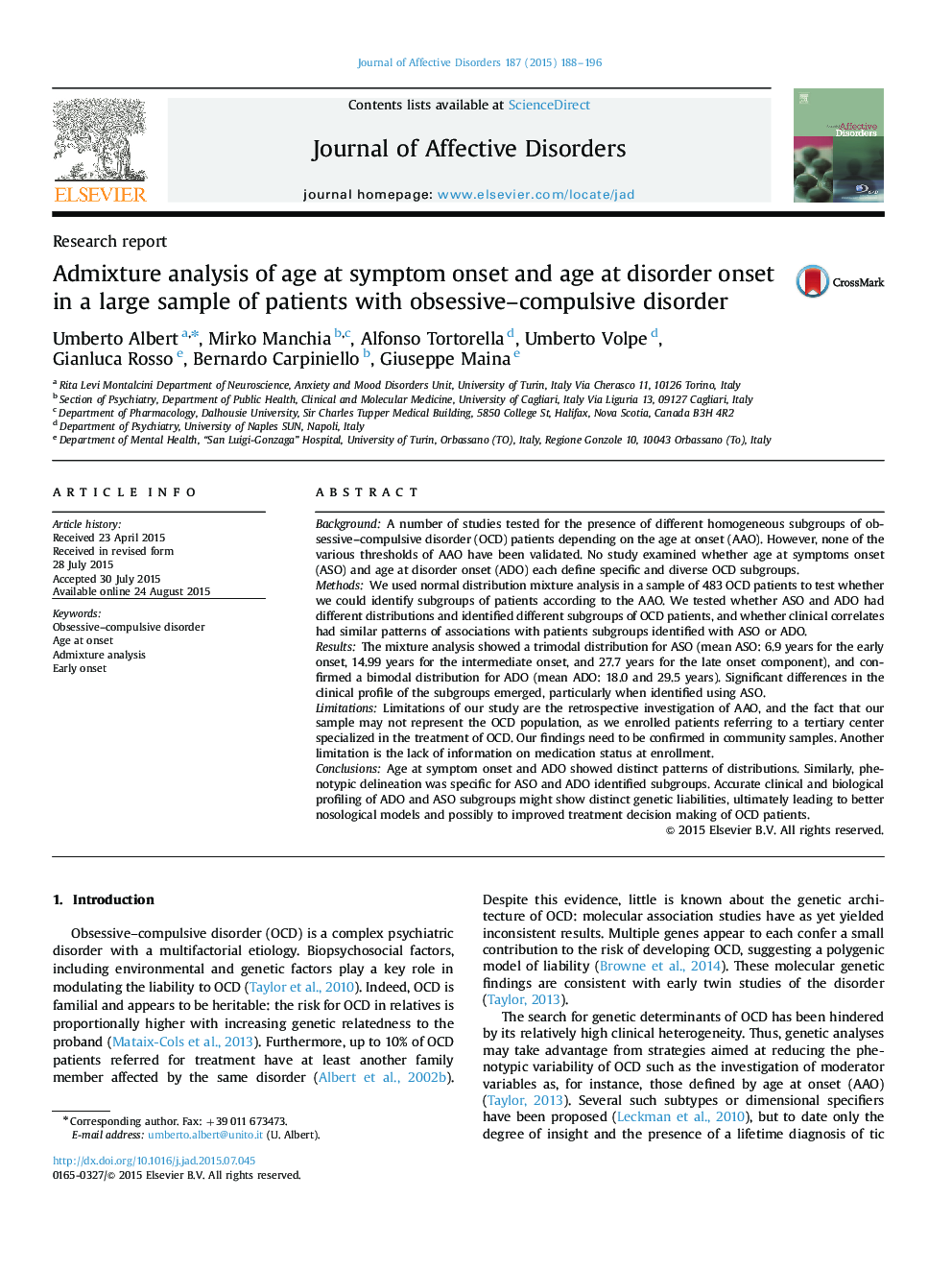| کد مقاله | کد نشریه | سال انتشار | مقاله انگلیسی | نسخه تمام متن |
|---|---|---|---|---|
| 6230994 | 1608138 | 2015 | 9 صفحه PDF | دانلود رایگان |

- Age at onset (AAO) could identify homogeneous subgroups of OCD patients.
- None of the various thresholds of AAO have been validated.
- We used admixture analysis in 483 patients on age at symptom and disorder onset.
- We found a bimodal distribution for ADO, but a trimodal distribution for ASO.
- We observed that ASO and ADO distribution presented significant differences.
BackgroundA number of studies tested for the presence of different homogeneous subgroups of obsessive-compulsive disorder (OCD) patients depending on the age at onset (AAO). However, none of the various thresholds of AAO have been validated. No study examined whether age at symptoms onset (ASO) and age at disorder onset (ADO) each define specific and diverse OCD subgroups.MethodsWe used normal distribution mixture analysis in a sample of 483 OCD patients to test whether we could identify subgroups of patients according to the AAO. We tested whether ASO and ADO had different distributions and identified different subgroups of OCD patients, and whether clinical correlates had similar patterns of associations with patients subgroups identified with ASO or ADO.ResultsThe mixture analysis showed a trimodal distribution for ASO (mean ASO: 6.9 years for the early onset, 14.99 years for the intermediate onset, and 27.7 years for the late onset component), and confirmed a bimodal distribution for ADO (mean ADO: 18.0 and 29.5 years). Significant differences in the clinical profile of the subgroups emerged, particularly when identified using ASO.LimitationsLimitations of our study are the retrospective investigation of AAO, and the fact that our sample may not represent the OCD population, as we enrolled patients referring to a tertiary center specialized in the treatment of OCD. Our findings need to be confirmed in community samples. Another limitation is the lack of information on medication status at enrollment.ConclusionsAge at symptom onset and ADO showed distinct patterns of distributions. Similarly, phenotypic delineation was specific for ASO and ADO identified subgroups. Accurate clinical and biological profiling of ADO and ASO subgroups might show distinct genetic liabilities, ultimately leading to better nosological models and possibly to improved treatment decision making of OCD patients.
Journal: Journal of Affective Disorders - Volume 187, 15 November 2015, Pages 188-196